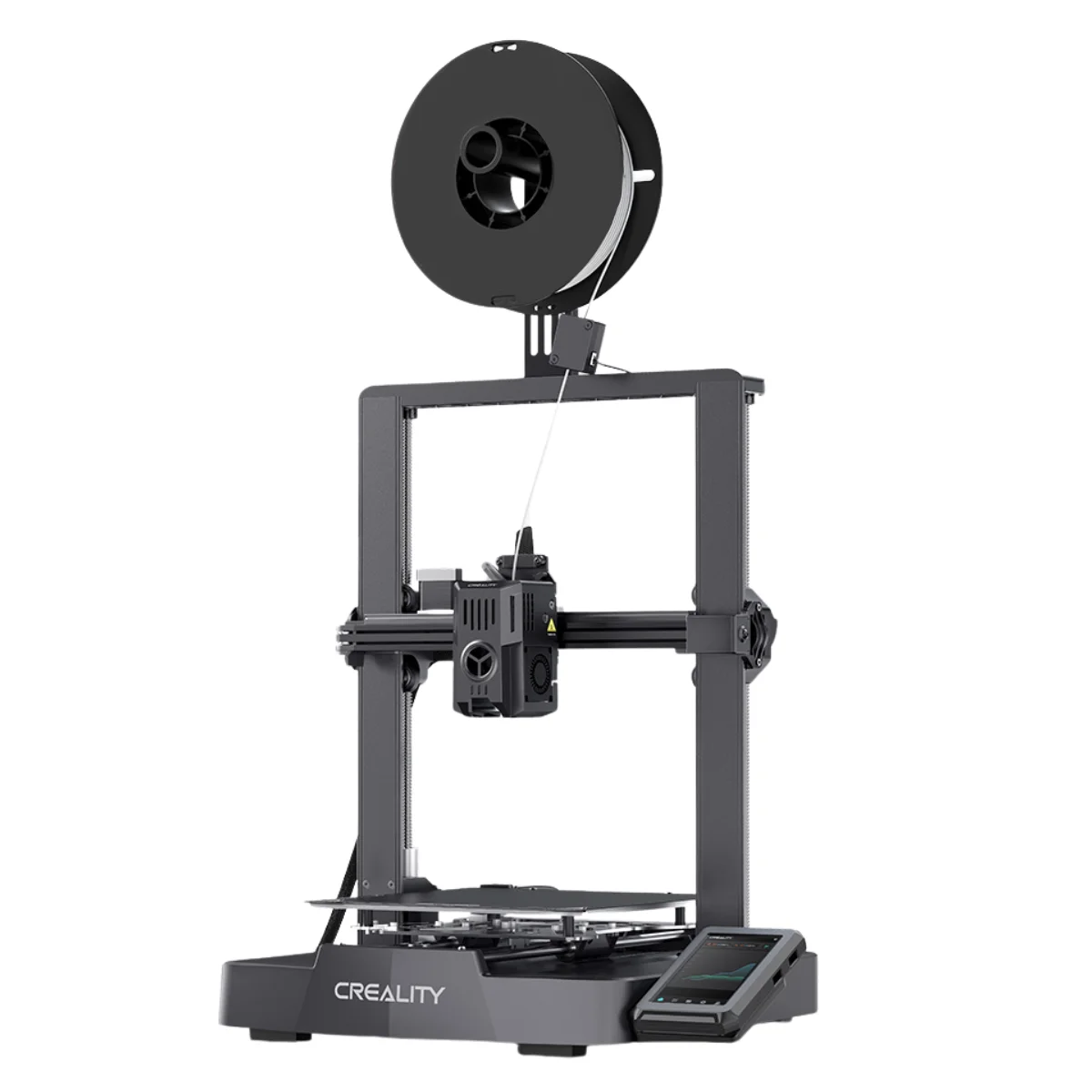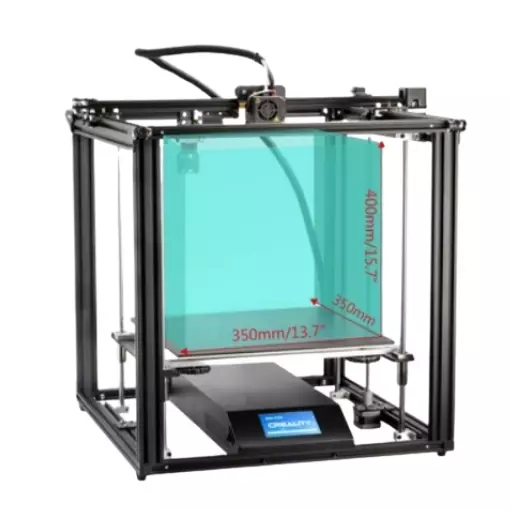Compare Ender 3 V3 KE vs Ender 5 Plus
Comparison between the best 3D printers
Choose the best 3D printer at the best price. The cheapest 3D printers are here.
Buy a 3D printer here with 3D Fila.
 |
 |
|
| Model | Ender 3 V3 KE[BUY Ender 3 V3 KE] |
Ender 5 Plus[BUY Ender 5 Plus] |
| Printing Material | Filament | Filament |
| Buy Filament for Creality Ender 3 V3 KE | Buy Filament forCreality 3D Ender 5 Plus | |
| Estimated price | $279,00 | $599,00 |
| Manufacturer | Creality | Creality 3D |
| Release Year | 2023 | 2019 |
| Print Volume [mm] | 220x220x240 | 350x350x400 |
| Printer Size [mm] | 433x366x490 | 632x619x666 |
| Weight [kg] | 7,8 | 18,2 |
| Power Loss Recovery | YES | YES |
| Enclosed printer | NO | NO |
| Bed Leveling | Automatic | Automatic |
| Filament End Sensor | YES | YES |
| Bed type | Heated | Heated |
| Power supply system | Direct Drive | Bowden |
| Standard nozzle | 0,4 | 0,4 |
| Maximum Nozzle Temperature [°C] | 300 | 260 |
| Maximum Bed Temperature [°C] | 100 | 100 |
| Maximum printing speed [mm/s] | 500 | 180 |
| Filament holder | YES | YES |
| Camera for supervision | NO | NO |
| Recommended filaments | PLA, PETG e TPU (95A+), ASA | PLA, TPU, ABS, PETG |
| Recommended slicers | Creality Print, Cura 5.0 ou superior, Prusa Slicer, Orca | Cura, Simplify, Slic3r |
| Maximum Resolution [mm] | 0,1 | 0,1 |
| Processor | 32-bit Silenciosa | 32 bits |
| Display | Touchscreen 4,3'' | Touchscreen TFT 4,3'' |
| Power Supply | 350 W | 24V / 504W |
| Connectivity | USB drive, LAN, Creality Cloud APP | SD / USB |
| Operating systems | Windows, Linux, Macbook | Windows, Mac, Linux |
| Date of registration in the system | 2024-03-06 | 2021-04-14 |
| Release date | 2023 | 2019 |
| Extra features | The Ender 3 V3 KE, an advancement in the Ender line, achieves print speeds of up to 500mm/s with its touchscreen and WiFi connectivity. Although it has a slightly smaller print area than the SE model, it makes up for it with superior print quality. Its robust design, high-quality components, and intuitive wireless control are appreciated, although Creality's mobile app lacks practicality and does not have a closed system. It stands out for its linear track on the X-axis for stability at high speeds and the hotend that supports up to 300°C, ideal for high-temperature filaments. | The Ender 5 Plus offers a large print volume (350x350x400 mm) and fast assembly. It includes a BLTouch sensor, but with range limitations. It stands out for its dimensional accuracy, although it requires adjustments to the slicer settings. Despite the noise, its integrated design saves space, and includes features such as a filament sensor and power resumption. Ideal for large projects, it requires refinement in the settings for high-quality prints. |
| Support for multiple colors and materials (AMS and CFS) | NO | NO |
Notes * |
||
| Cost-benefit | 7 / 10 | 6 / 10 |
| Hardware | 2.8 / 10 | 2 / 10 |
| Tela | . | . |
| Print volume | 3 / 10 | 4 / 10 |
| Performance | 4 / 10 | 1 / 10 |
| [BUY Ender 3 V3 KE] | [BUY Ender 5 Plus] |
Conclusion |
| In comparing the Ender 3 V3 KE and the Ender 5 Plus, several key factors emerge to help determine which printer offers the best value for users at varying levels of expertise and project requirements. The Ender 3 V3 KE, priced more competitively, stands out with its high printing speed of up to 500 mm/s, and offers excellent print quality particularly with high-temperature filaments due to its maximum nozzle temperature of 300°C. Its compact size and lighter weight make it favorable for smaller workspaces, and the inclusion of automatic bed leveling, a filament end sensor, and a touchscreen interface adds to its user-friendly design. The cost-benefit analysis reveals that it rates significantly higher in terms of performance to price ratio, making it an ideal choice for hobbyists and those looking for a reliable, high-speed printer. On the other hand, the Ender 5 Plus, while more expensive, compensates with a larger print volume and reputable dimensional accuracy. It is better suited for larger projects, accommodating more complex builds thanks to its substantial print area. However, it appears to require more careful calibration and adjustments to achieve optimal results, which could pose challenges for beginners. Its integrated design is ideal for users with limited space, but the associated higher noise levels could be a consideration in quieter environments. In conclusion, the best choice ultimately depends on the user's specific needs: the Ender 3 V3 KE offers excellent performance and value, making it ideal for a broader audience, while the Ender 5 Plus is better suited for serious projects requiring a larger print volume and a focus on detail. For most users seeking affordability and efficiency, the Ender 3 V3 KE comes out as the superior option, while the Ender 5 Plus may appeal to advanced users who frequently handle larger, more complex prints. |

